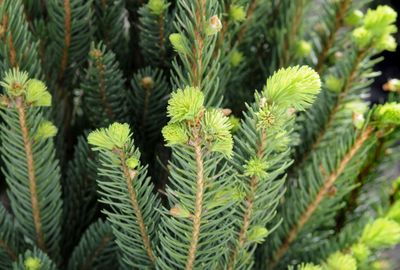Tough trees need love
This time of year, give those hard-working evergreen trees a well-deserved drink

Indoors, up go boughs of holly. A green garland twines the banister. Candles are scented with pine. And at the heart of many homes, cloaked in regalia that sparkles with memories, an evergreen tree likely will be at the center of celebration, hugs and delight.
Outdoors, dark green shapes sulk unnoticed along the foundation – just something that came with the house, no more glamorous than the gutters.
Plants that stay green through Northern winters have been revered for many centuries for their power to endure through the darkest, coldest days, according to Michael Stieber, who runs the Sterling Morton Library at The Morton Arboretum in Lisle, Ill.
The holly and ivy, wreaths and Christmas trees we so enjoy are traces of ancient religions.
So don’t the evergreens in our yards deserve a little respect? It’s not easy, you know, living through all the craziness winter can dish out, with 20 pounds of lights on your branches, splashed with salty slush and with hardly anything to drink since September.
Evergreens are survivors. They keep their leaves for several years to conserve scarce nutrients in tough environments such as mountainsides and far northern forests, according to William Burger, curator emeritus of botany at The Field Museum in Chicago.
They can afford to make those needle-like leaves stiffer and sturdier than the single-season leaves of maples or sycamores, with a heavy waxy coating to hold in moisture.
But there’s a downside to keeping your leaves all year: You need to keep them filled with water. And when the ground is frozen, water can’t flow.
So let’s give a cup of cheer to the evergreens that brighten our yards and neighborhoods all year, by watering them whenever the ground isn’t frozen.
Hopefully, as winter approached, you made sure all evergreens (including azalea, holly and boxwood) had a chance to pack lots of water into their roots, wood and leaves. But even during December through February, any time water will soak in, seize the chance to water.
Pour a few buckets around the base of the plant or let the hose dribble slowly for a good hour at each of several spots over the roots.
Evergreens planted within the last two years are especially vulnerable. Of course, melting snow helps, but remember that snow is more air than water.
Figure out what you have; different species have different needs. Plants with needles (conifers) are a different ballgame than broadleaf evergreens such as boxwoods and azaleas. If you’re not sure, take pictures and branches to a good garden center.
No evergreens? Plant some. Evergreens provide winter cover for wildlife and, as the ancients knew, a winter lift for spirits.